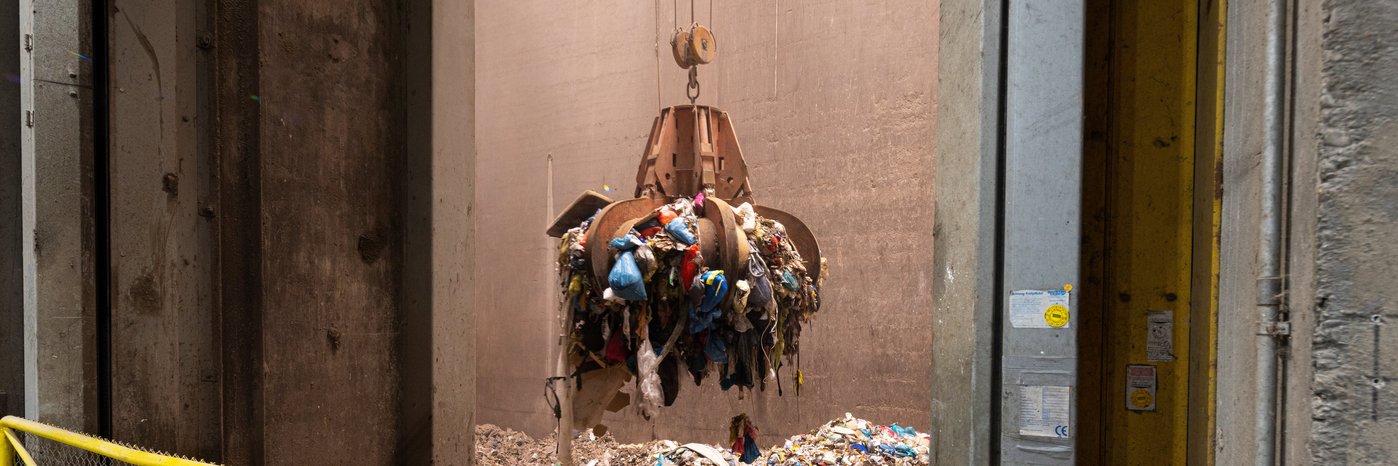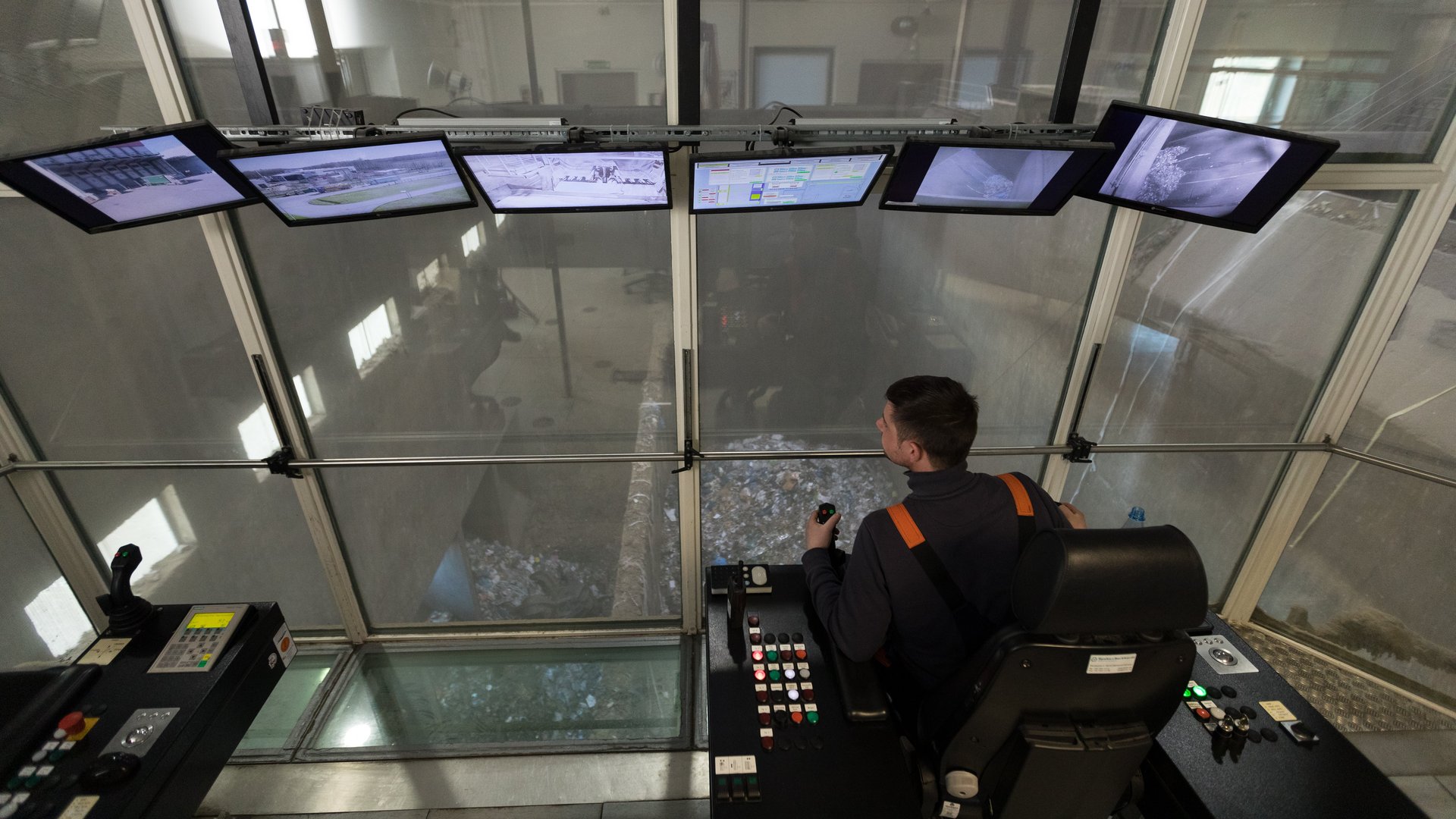Energy from Waste
Waste can really almost be considered to be a cultural asset: remnants of human life have been indicators of social development since human existence. Landfilling was the first waste management concept developed in order to be able to cope with the increasing amounts of waste accumulated in the course of the centuries. This method of depositing waste persisted as the chief element of waste disposal until the end of the 20th century.
The awareness that waste dumping is a ticking time bomb however only really became acute in the 1980s. Concrete political action towards minimisation of the potential damage to the environment by landfill sites only followed in 1993. Dumping untreated waste was then completely forbidden (with a 12 year transition period) by the Technical Instructions on Municipal Solid Waste (TASi).
Two Treatment Methods
The introduction of the Recycling and Waste Management Act (KrW-/AbfG) in 1996 set three objectives: to try to avoid waste, to recycle and dispose of existing waste. These requirements then had to be implemented by all the federal states of Germany.
Exceptions to the rule were to be prevented by the Waste Dumping Directive (AbfAblV) issued 1 March 2001. The obligatory treatment of residual waste made the utilisation of the energetic potential of this waste an important aspect for the legislators. This was however associated with high investments by the operators in safe plants compliant with this requirement. Since 2005, two different TASi-compliant waste pretreatment methods are used in Germany: municipal solid waste incineration (MSWI) and mechanical biological treatment (MBT).
MSWI and MBT

100% Energy Utilisation - 90% Volume Reduction.
Waste is not only burned in a municipal solid waste incineration plant (MSWI), but also used energetically. Waste incineration reduces the volume of waste by 90 percent! Coarse fractions such as bulky refuse are crushed in the waste bunker.
The garbage in the bunker is mixed thoroughly in order to achieve a good mixture of low and high energy-containing fractions. This ensures homogeneous combustion characteristics in the boiler.
Remaining 10% Residual Material Is Recycled.
Large grippers transfer the mixed waste to the feed hopper at regular intervals. The lump of waste then falls on the incineration grate by its own weight. Incineration then takes place in the boiler without addition of fossil fuels.
Once the waste is completely burnt, the slag at the end of the incineration grate slides into a water bath. After cooling, the reaction-neutral slag is processed. Metals are filtered out by means of a metal separator and reused.
Waste has a high calorific value. Energy liberated during incineration is used for generation of electric power and district heat as well as for production of process steam.
MBT Digests Biogenic Waste Components.
The goal of mechanical biological treatment (MBT) of waste is also to reduce the volume of waste. This is however limited to a 30 percent reduction.
Separation of the bulky coarse fraction is the first step in the treatment chain.
Several different crusher machines and screening lines then separate the biologically treatable (organic) fraction from the fraction with the high calorific value (further processing in MSWI). Metallic components in the mixed waste are removed using a magnet. Other recoverable materials such as metal parts and wood are sent for recycling.
Efficient Help from Hungry Bacteria
The next step involves comminution, homogenisation and moistening (if necessary) of the organic fraction. This guarantees a homogeneous biological transformation.
Two procedures are currently available for this. One of these is aerobic digestion requiring oxygen. Special bacteria ensure a homogeneous digestion process. The other is anaerobic digestion is without requirement of oxygen. Although more complicated from a process engineering point of view, the method has the advantage that the generated biogas can be used energetically.
The aerobic and anaerobic processes differ in terms of the type of ventilation, the method of conversion and the process and constructional requirements. The earth-like residual material created in the process is integrated in the refuse disposal sites.
Comparison of Two Treatment Types.
Whether incineration or mechanical biological treatment: in terms of legal regulations, municipal solid waste incineration and mechanical biological treatment are considered as equivalent pretreatment routes.
Comparison of Municipal Solid Waste Incineration and Mechanical Biological Treatment.
| Municipal Solid Waste Incineration | Mechanical Biological Treatment |
|---|---|
| Reduction of waste by 90% | Reduction of waste by 30% |
| Hygienic process | Microbial degradation processes give rise to renewed contamination of output materials |
| No further landscape consumption necessary | Dumping is still necessary (complete prohibition of dumping aimed at for 2020) |
| Works as pollutant sink | High calorific fraction still has to be incinerated |
| Substitution of fossil fuels by utilisation of energetic potential | Limited substitution of fossil fuels |
| Slag end product is reaction-neutral, TOC* = 3 mass % | Output still reacts to a small extent TOC = 18 mass % |
| Avoidance of climate-damaging gases such as methane |
*TOC = Total Organic Carbon
Complete Utilisation of Energetic Potential.
The German Federal Government has set clear targets for long-term waste disposal: by 2020, treatment methods should be improved and developed to a degree allowing all municipal solid waste in Germany to be recycled completely and in an ecologically acceptable manner. The aim is the complete utilisation of the energetic potential contained in waste.
This means that no waste treatment residues may be deposited on ground-level landfills from the year 2020. Underground repositories for deposition of filter dusts will however continue to exist.
Waste Incineration Remains Chief Component
This aim can already be achieved with existing treatment methods today. The Federal Ministry for the Environment, Nature Conservation and Nuclear Safety (BMU) conducted a study involving various combinations of current treatment methods and comparing their efficiency with regard to optimal recovery and cost.
The study concluded that the combinable treatment methods represented in the scenarios are partly already used today. The most important element of this combination however is, and will continue to be, the incineration process. Specific waste incineration plant optimisation methods are being tested and are currently at the experimental stage. These plants only require slight modification to fulfil the final target sets for 2020.




